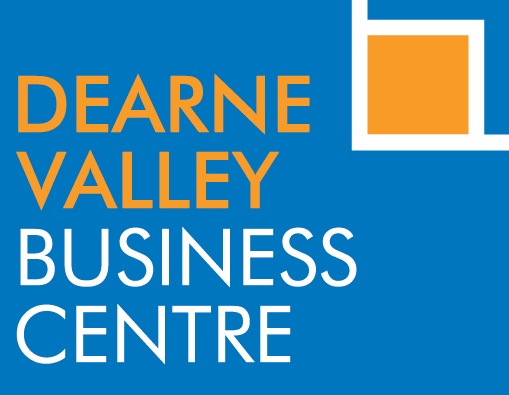News: Metalysis to aid hunt for oxygen on the Moon
Innovative technology pioneered in Rotherham by Metalysis is being backed by the European Space Agency (ESA) in their efforts to "mine space" and colonise the Moon.
The Advanced Manufacturing Park (AMP) company holds the worldwide exploitation rights to the FCC Cambridge process which sees specialist powder metals created in a simple, cost effective process with significant environmental benefits. It is in the process of commercialising the technology to produce titanium, tantalum, and related high value alloys. These are used increasingly by major worldwide industries such as aerospace, marine, medical, chemical, automotive and electronics.
As ESA and other agencies prepare to send humans back to the Moon – this time to stay – technologies that make use of materials available in space are seen as key to sustainability, and a stepping stone in humankind's adventure to Mars and farther into the Solar System.
As reported by Rothbiz in 2017, Metalysis has been working with the agency to see if any of the "raw materials" on the Moon which have the potential to be mined can be converted into usable materials using the firm's electrochemical process.
The Metalysis process has recently been proven for the industrial-scale production of metals and alloys, leading to the present investigation into the potential application of this process to regolith-like materials in a lunar context. An initial proof of concept study has resulted in a metallic powder where 96% of the total oxygen is successfully extracted, in conjunction with giving a mixed metal alloy product that can be used for in-situ manufacturing.
The project will provide an assessment to prepare and de-risk technology developments, focussed towards oxygen production for propellants and life support consumables. The ability to extract oxygen on the moon is vital for future exploration and habitation, being essential for sustainable long duration activities in space. In-Situ Resource Utilisation (ISRU) will significantly reduce the payload mass that would be needed to be launched from earth.
Advertisement
A previous NASA-funded study, undertaken in 2004, investigated the applicability of the FFCCambridge process for the electrolysis of lunar ilmenite, termed the Ilmenox process. At the time of this previous work, the development of the FFC-Cambridge process was still in its early stages and had only been proven at a laboratory scale.
Since this time, Metalysis has successfully scaled-up its technology, with a further three generations designed, commissioned, and in operation. As of 2018, titanium and tantalum metal production has been developed at an industrial scale, and the production of many other metals and alloys has also been proven. More recently, the production of intermetallics of aluminium and scandium has been increased to industrial scale.
Two SME teams have been working to devise process-monitoring systems that will work with the Metalysis electrochemical cells in space.
Working alongside Metalysis, Added Value Solutions (AVS) will work to determine the steps required to translate the Metalysis technology from an on-earth to extra-terrestrial environment.
Ian Mellor, managing director at Metalysis, said: "We are really pleased Metalysis is involved in this exciting programme; taking an established earth-based technology and applying it to a lunar setting. The fact that the process is capable of simultaneously producing both oxygen and metal powders is unique, offering potential solutions to two key areas of the ESA Space Resources Strategy."
Sue Horne, Head of Space Exploration at the UK Space Agency, added: "In the future, if we want to travel extensively in space and set up bases on the Moon and Mars, then we will need to make or find the things required to support life - food, water and breathable air.
"The involvement of Metalysis in a programme that aims to do just that, by producing oxygen on a lunar setting, will showcase the UK's space credentials on the world-stage and help unlock breakthroughs that bring future space exploration a step closer."
The UK Space Agency, NASA and other partners recently signed a historic agreement on principles for space ahead of a future mission to the Moon.
Metalysis website
Images: ESA
The Advanced Manufacturing Park (AMP) company holds the worldwide exploitation rights to the FCC Cambridge process which sees specialist powder metals created in a simple, cost effective process with significant environmental benefits. It is in the process of commercialising the technology to produce titanium, tantalum, and related high value alloys. These are used increasingly by major worldwide industries such as aerospace, marine, medical, chemical, automotive and electronics.
As ESA and other agencies prepare to send humans back to the Moon – this time to stay – technologies that make use of materials available in space are seen as key to sustainability, and a stepping stone in humankind's adventure to Mars and farther into the Solar System.
As reported by Rothbiz in 2017, Metalysis has been working with the agency to see if any of the "raw materials" on the Moon which have the potential to be mined can be converted into usable materials using the firm's electrochemical process.
The Metalysis process has recently been proven for the industrial-scale production of metals and alloys, leading to the present investigation into the potential application of this process to regolith-like materials in a lunar context. An initial proof of concept study has resulted in a metallic powder where 96% of the total oxygen is successfully extracted, in conjunction with giving a mixed metal alloy product that can be used for in-situ manufacturing.
The project will provide an assessment to prepare and de-risk technology developments, focussed towards oxygen production for propellants and life support consumables. The ability to extract oxygen on the moon is vital for future exploration and habitation, being essential for sustainable long duration activities in space. In-Situ Resource Utilisation (ISRU) will significantly reduce the payload mass that would be needed to be launched from earth.
Advertisement
A previous NASA-funded study, undertaken in 2004, investigated the applicability of the FFCCambridge process for the electrolysis of lunar ilmenite, termed the Ilmenox process. At the time of this previous work, the development of the FFC-Cambridge process was still in its early stages and had only been proven at a laboratory scale.
Since this time, Metalysis has successfully scaled-up its technology, with a further three generations designed, commissioned, and in operation. As of 2018, titanium and tantalum metal production has been developed at an industrial scale, and the production of many other metals and alloys has also been proven. More recently, the production of intermetallics of aluminium and scandium has been increased to industrial scale.
Two SME teams have been working to devise process-monitoring systems that will work with the Metalysis electrochemical cells in space.
Working alongside Metalysis, Added Value Solutions (AVS) will work to determine the steps required to translate the Metalysis technology from an on-earth to extra-terrestrial environment.
Ian Mellor, managing director at Metalysis, said: "We are really pleased Metalysis is involved in this exciting programme; taking an established earth-based technology and applying it to a lunar setting. The fact that the process is capable of simultaneously producing both oxygen and metal powders is unique, offering potential solutions to two key areas of the ESA Space Resources Strategy."
Sue Horne, Head of Space Exploration at the UK Space Agency, added: "In the future, if we want to travel extensively in space and set up bases on the Moon and Mars, then we will need to make or find the things required to support life - food, water and breathable air.
"The involvement of Metalysis in a programme that aims to do just that, by producing oxygen on a lunar setting, will showcase the UK's space credentials on the world-stage and help unlock breakthroughs that bring future space exploration a step closer."
The UK Space Agency, NASA and other partners recently signed a historic agreement on principles for space ahead of a future mission to the Moon.
Metalysis website
Images: ESA













1 comments:
The same Metalysis who went bust a few years ago costing local companies like mine tens of millions. Never paid a penny back.
Post a Comment